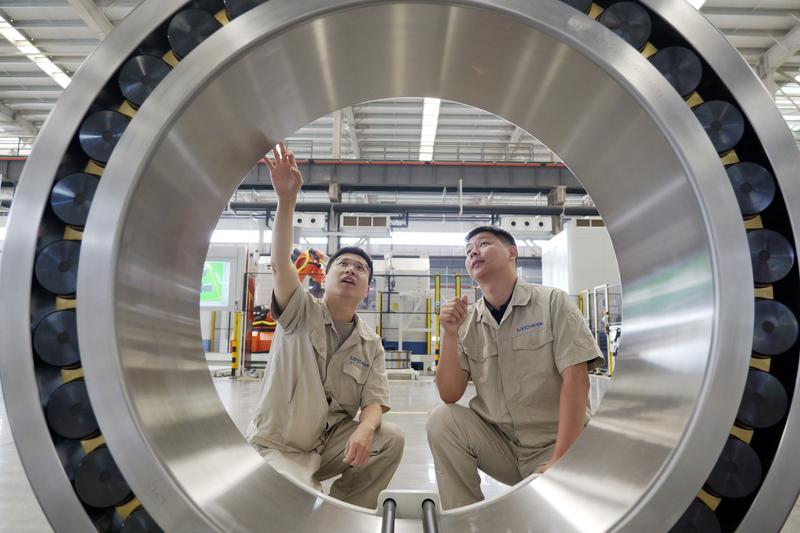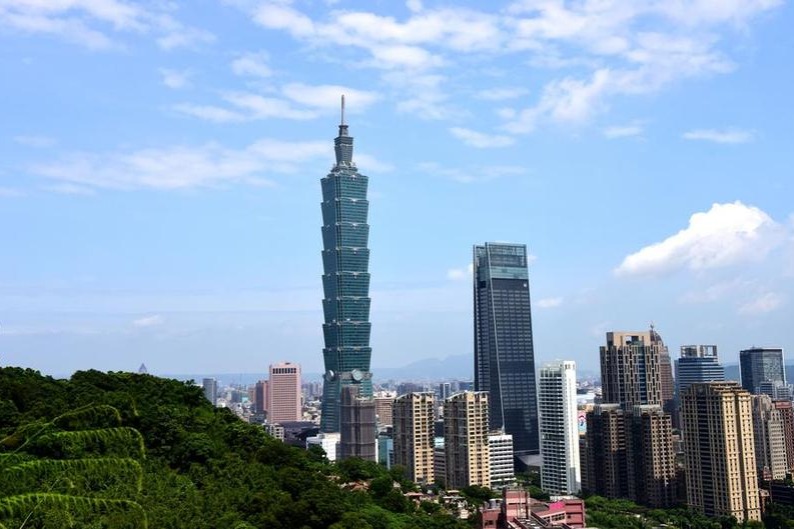Five-year plans steer decades of progress
Strategic guidance proves governance efficacy as China propels modernization


In 1954, one year after China initiated the inaugural Five-Year Plan (1953-57), a specialized factory for manufacturing bearings, core components of mechanical equipment, was set up in Luoyang, Henan province.
It was one of the 156 key projects launched nationwide during the period when the country was striving to build up the basic industries essential for national industrialization. These projects, spanning sectors such as steel, machinery, energy and chemical engineering, laid the foundation for China's industrialization in its early days, marking a determined stride from an agricultural society toward industrial prowess.
Over 70 years later, Luoyang Bearing Group stands as a testament to this enduring vision, as it has evolved into an innovation-driven enterprise manufacturing over 30,000 types of high-precision bearings, vital to industries ranging from aerospace and wind power to rail transit and marine engineering.
During a visit to the company in May, President Xi Jinping, who is also general secretary of the Communist Party of China Central Committee and chairman of the Central Military Commission, reflected on this remarkable progress, saying: "China has always adhered to the path of developing the real economy. From the past reliance on imported matches, soap and iron, to now becoming the world's largest manufacturing country with the most complete industrial categories, we have taken the right path."
Sticking to this path, China has remained the world's largest manufacturing country for 15 consecutive years. Observers noted that this transformative journey underscores the profound efficacy of the five-year plan system as a fundamental instrument of China's governance.
Five-year plans are crucial strategic documents that outline national goals, major tasks and policy directions in various sectors for each five-year period.
It is an approach that experts say maintains policy continuity and stability toward established goals, and ensures the efficient and well-calibrated allocation of resources.
Formulating and implementing five-year plans has been a hallmark of the Communist Party of China's governance, enabling China to promote coordinated economic and social development over the medium and long terms. For China, the consistent theme from the first Five-Year Plan to the 14th Five-Year Plan (2021-25), as President Xi pointed out, has been to build China into a modern socialist country.
For more than seven decades, a key to the enduring vitality of the five-year plan system lies in "a synergistic relationship in which the top-level design and long-term perspective of national planning effectively complement the microlevel efficiency and innovative drive of the market economy", said Yan Yilong, deputy dean of the Institute for Contemporary China Studies at Tsinghua University.
"This system operates on three pillars: building consensus on national goals through political guidance and scientific planning, breaking down goals into actionable tasks with evaluation and supervision, and ensuring resource allocation to support these objectives," Yan said.
The five-year plans are not merely economic plans but comprehensive national development blueprints, and the robust implementation of these blueprints is the highlight of China's governance, he added.
Acknowledging the nature and significance of China's five-year plan system, The Diplomat, a Washington, DC-based foreign affairs magazine, noted that "the plans are neither rigid blueprints nor mere guidelines. Instead, they act as authoritative signals that shape the behavior of ministries, provincial governments, State-owned enterprises, private firms, and increasingly foreign investors".
Over the decades, China's five-year plans have guided continuous progress in national development and living standards, from ensuring adequate food and clothing after completing the sixth and seventh five-year plans in the 1980s to propelling China's total economic output to become the world's second-largest in the 11th Five-Year Plan (2006-10) period.
"Five-year plans illustrate the nation's shift from a planned economy to a socialist market economy," said Zhang Zhanbin, director of the Chinese Modernization Research Center at the Party School of the CPC Central Committee.
He highlighted the transformative power of these plans by citing the example of the revitalization of Northeast China, comprising Heilongjiang, Jilin and Liaoning provinces.
The region became the nation's heavy-industry heartland during the first Five-Year Plan period and was reinvigorated decades later by the 10th Five-Year Plan (2001-05), which proposed to support the adjustment and transformation of the old industrial base. Each subsequent five-year plan has included dedicated sections outlining tasks for Northeast China's revitalization.
The 14th Five-Year Plan has initiated a more comprehensive revitalization phase for Northeast China, with a State Council-approved implementation plan outlining a clear road map for the region's future.
"The elevating of the strategic positioning of Northeast China in the recent five-year plans reflects the Party and the country's earnest expectations for its comprehensive revitalization in the new era," Zhang said.
Pivotal stage
The year 2025 signifies the conclusion of the 14th Five-Year Plan and is pivotal in shaping the subsequent five-year agenda.
The 15th Five-Year Plan (2026-30), the draft proposals of which are being discussed at the ongoing fourth plenary session of the 20th CPC Central Committee, is tasked with achieving "decisive progress" in basically realizing socialist modernization by 2035, said Yan.
Speaking at a symposium with provincial leaders in Shanghai in April, Xi pointed out that the scientific formulation and consistent implementation of five-year plans represent an important experience of the Party in governing the country and a major political strength of socialism with Chinese characteristics.
Xi, who previously led the drafting groups for both the 13th and 14th five-year plans, has consistently emphasized strategic foresight in guiding each phase of national development.
During the 13th Five-Year Plan (2016-20) period, he underscored that this stage was decisive for building a moderately prosperous society in all respects and highlighted the importance of leveraging strategic opportunities. For the 14th Five-Year Plan, he outlined the historic mission of advancing toward the second centenary goal and called for a profound understanding of the new stage of development, including its characteristics and requirements.
Broad consensus
Looking ahead to the 15th Five-Year Plan, Xi has highlighted that the formulation and implementation of this plan has immense significance for fully realizing the strategic initiatives outlined at the 20th CPC National Congress and advancing Chinese modernization.
In an instruction in May, he emphasized the importance of integrating top-level design with seeking advice from the public, enhancing research and discussions, and building broad consensus, and stressed sound, democratic and law-based decision-making to ensure that the next five-year plan is formulated with high quality.
A key feature of the planning process has been the emphasis on public participation. From May 20 to June 20, an online campaign soliciting opinions for the 15th Five-Year Plan received over 3.11 million suggestions from the public. Xi described this as a vivid example of whole-process people's democracy and urged relevant departments to carefully study and absorb these valuable insights.
By integrating visionary guidance with inclusive governance, China's "target governance mechanism", exemplified by the five-year plan system, continues to be a vital tool for aligning national ambitions with the aspirations of its people, said Yan, the Tsinghua expert.
As China navigates a complex landscape of technological acceleration, economic transformation and strategic competition, the next five-year plan represents a critical step toward securing sustainable and high-quality development, he added.
Wu Yong in Shenyang and Qi Xin in Zhengzhou contributed to this story.
jihaisheng@chinadaily.com.cn
- New international body for mediation formed in Hong Kong
- Bogota to present Shanghai Award, a first for South America
- Chinese researchers make breakthrough in scanning the universe
- Aerial photos reveal Guizhou's dramatic karst landscape
- Guizhou's Huanggang village named on UN Best Tourism Village list
- Gansu's first captive-born panda cub turns one month old




































